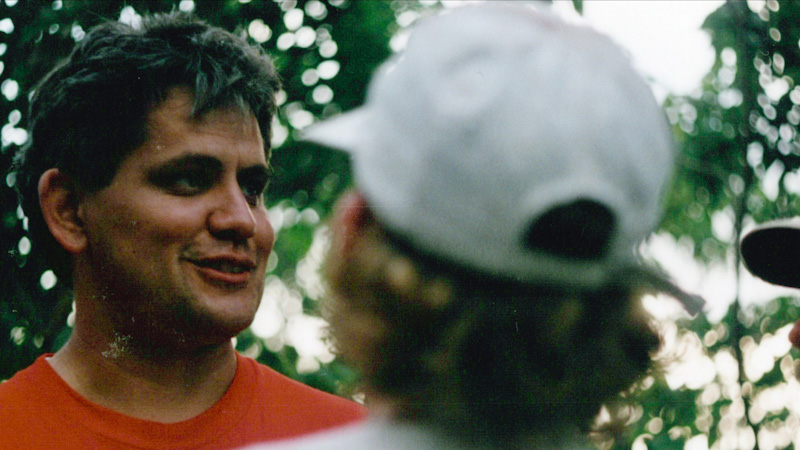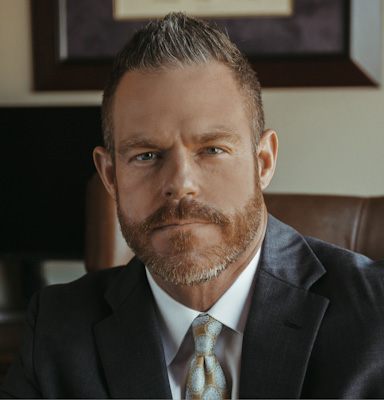When trying to discipline teens, how much is too much?

Netflix’s Hell Camp: Teen Nightmare, released in December 2023, describes the Challenger Foundation’s wilderness therapy camp. In 1992, the program’s founder, Steve Cartisano, was found not guilty of child abuse and negligent homicide. (Photo courtesy of Netflix)
Netflix’s Hell Camp: Teen Nightmare, released in December 2023, sounds like a cheesy 1980s slaughter-fest horror film. Sadly, the events relayed by the documentary are far from fiction.
As a film about wilderness therapy camps for troubled teens, Hell Camp is difficult to watch; the survivor’s scars still come through in full view. However, it gives an opportunity to examine how we approach attempts at correcting our youth’s behavior, and I see a connection to how we treat young athletes. More on that later.
Scared Straight! meets the great outdoors
When the film Scared Straight! was released in 1978, it introduced society to a new method of “rehabilitating” troubled youths through “shock” therapy. But this wasn’t electric shock therapy; instead, the tactic focused on scaring or shocking teens into better behavior.
Since then, we’ve seen various iterations of this approach. The recipe for the “troubled teen industry” is pretty straightforward: Take a adolescent who is failing to adhere to their parents’ expectations, throw them in a group setting within an isolated environment, add some overly aggressive and hard-edged adults to oversee the “treatment,” and viola– you end up with a “good” kid.
Hell Camp describes one such program, the Challenger Foundation’s wilderness therapy camp. That camp had an added twist: it was located in the Utah desert, far from civilization. The program transitioned to Samoa after Kristen Chase, 16, died from heat stroke while participating. According to the documentary, in the late eighties and early nineties, parents spent around $16,000—approximately $40,000 today—to send a child to the camp.
In 1992, the program’s founder, Steve Cartisano, was found not guilty of child abuse and negligent homicide resulting in Chase’s death. But after watching the Netflix documentary, it’s hard to believe he was unaware of his program’s practices or the lack of restraint his employees showed the participants.
The approach was intense, and it’s hard to wonder how much the parents should share in the blame. At the same time, when you put your children in the hands of someone you believe will have their best interest in mind, can you ever know for sure whether you agree with the methods that will be employed?
Recently we have seen an uptick in litigation involving these camps. According to Reuters, plaintiffs’ counsel are “honing legal strategies to bring a new wave of lawsuits on behalf of those who allege program-induced traumas.” This practice has been bolstered by the American Association of Justice, a plaintiff lawyer organization previously known as the Association of Trial Lawyers of America, and their “troubled teen industry abuse” litigation group.
Although the applicable statute of limitations can often serve as a roadblock for the participants themselves, some families have circumvented the issue by having the parents sue for fraud or negligent misrepresentation. In those situations, at least the child is still alive.
That isn’t always the case when a parent has to seek relief from those whom they entrusted their child’s welfare and safety.
Parallels in the world of athletics
Those who follow football at any level are aware of the danger players face due to extreme heat. Precautions must be taken to protect the participants, and it is important for coaches and trainers to recognize symptoms of heat stroke. Left unchecked, the condition can be deadly. As with other forms of negligence resulting in serious harm, lawsuits often follow.
In January 2024, the family of a Mississippi boy who died due to heat complications sued the high school he played for, alleging the decision to force players to practice in 103-degree heat led to his death. Part of the family’s allegations center around coaching staff forcing the boy to run wind sprints in the heat even after he had vomited. A similar lawsuit was filed in June, after a high school football player had to be placed in a medically induced coma after suffering a heat stroke subsequent to practicing in elevated temperatures outdoors.
I grew up competing in athletics. My best sport was football. I genuinely loved the physical nature of the contact and found a great deal of comfort in the routine of the grind. My coaches preached the ebb and flow of competition as a microcosm for life in general and self-improvement specifically. We had plenty of troubled teens on the team, and football did help keep them out of trouble, at least when they were on the field.
And while my coaches did push us to be our best, the critical aspect there is that they pushed us. With popular football drills like “bull in the ring” and “The Oklahoma drill.” We battled each other at their command. Most of us reveled in the chaos and conflict, and our coaches drove us harder, further–maybe to test our metal, to see if we’d break. I never thought of it as abuse, and I still don’t to this day. But I wanted it as well.
During two-a-days practices my sophomore year, I was competing for a starting spot at linebacker. My football team, the Clinton Red Tornadoes, is one of the most celebrated in Oklahoma history, due to its many state championship titles and more all-time wins than any other program in the state. I was busting my butt in the Oklahoma heat, and one day after our second session, I started to cramp up terribly. I began vomiting bile. I was hot, confused and in and out of consciousness. I was rushed to the ER. I was severely dehydrated, but three ccs of saline later, and I was back out on the field the next day.
I was lucky. Stories of young athletes dying from heat exhaustion are not rare. Search the internet, and you will find countless accounts of young men who fell victim to the same fate as Kristen Chase, albeit in a vastly different setting.
How much is too much?
I was happy to push myself as an athlete, mostly, and my coaches were happy to push me as well. That wasn’t the case for everyone on the team, though. There were players whose parents made them participate.
Those kids didn’t take to the coaching staff’s demanding nature the same way. They didn’t want to be there, but they didn’t have a choice. Somewhat similar to the young people in Hell Camp, they were pushed beyond their comfort levels against their will in the name of self-improvement, teamwork and someone else’s idea of what might make them a better person.
Don’t get me wrong; a strict approach can make a difference in almost anyone’s behavior. However, there isn’t a “one-size-fits-all” method for correcting conduct. Moreover, not every type of conduct needing correction is the same. There’s a line between “hard love” and child abuse. The adults at Challenger crossed that threshold.
Sometimes, the wrong approach can do more harm than good. In my opinion, it’s incredibly challenging to ascertain what type of approach, and to what degree, will work with any individual. What some young people may tolerate just fine might harm others mentally and emotionally.

Adam Banner
Adam R. Banner is the founder and lead attorney of the Oklahoma Legal Group, a criminal defense law firm in Oklahoma City. His practice focuses solely on state and federal criminal defense. He represents the accused against allegations of sex crimes, violent crimes, drug crimes and white-collar crimes.
The study of law isn’t for everyone, yet its practice and procedure seems to permeate pop culture at an increasing rate. This column is about the intersection of law and pop culture in an attempt to separate the real from the ridiculous.
This column reflects the opinions of the author and not necessarily the views of the ABA Journal—or the American Bar Association.



